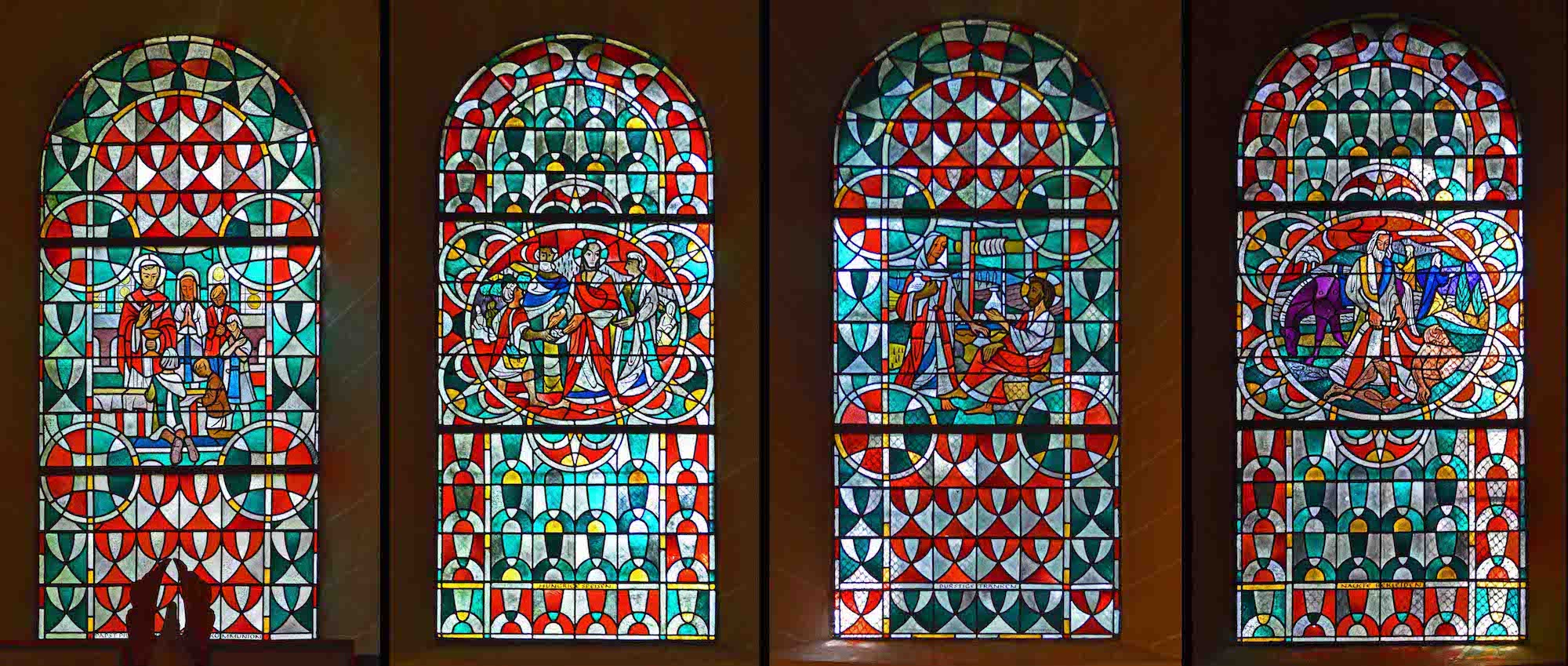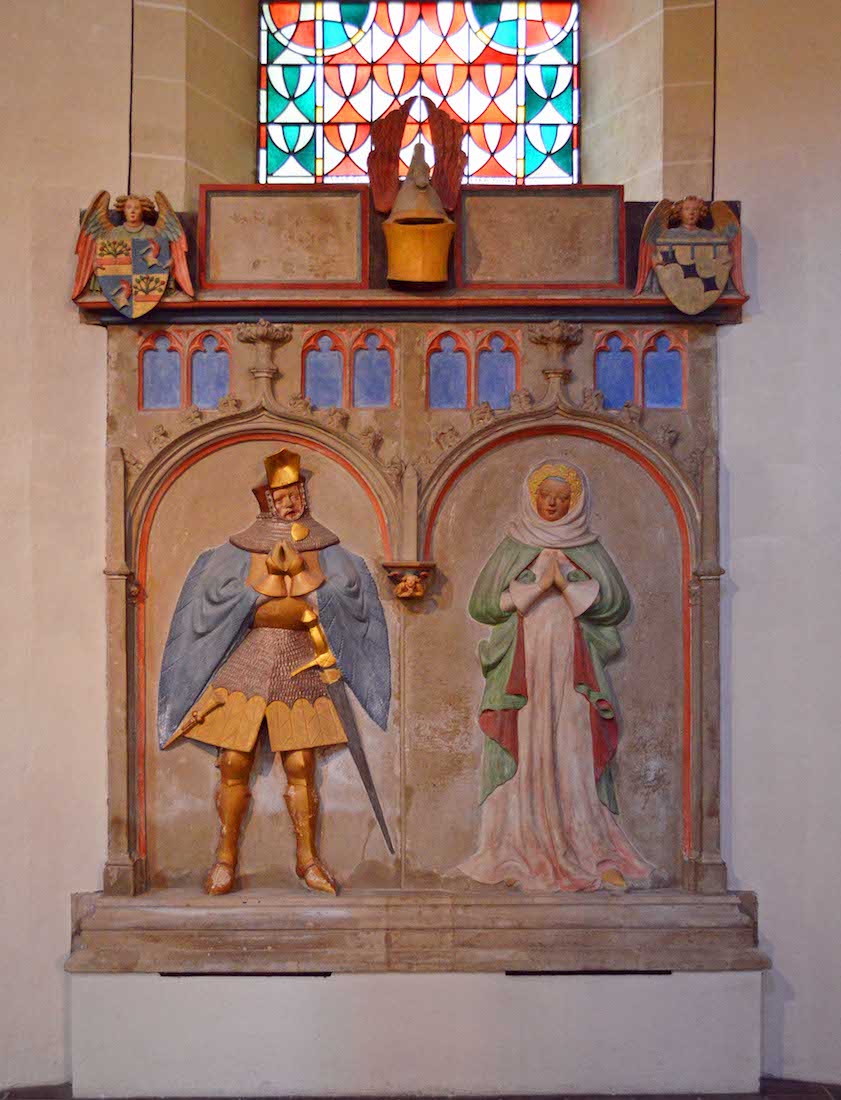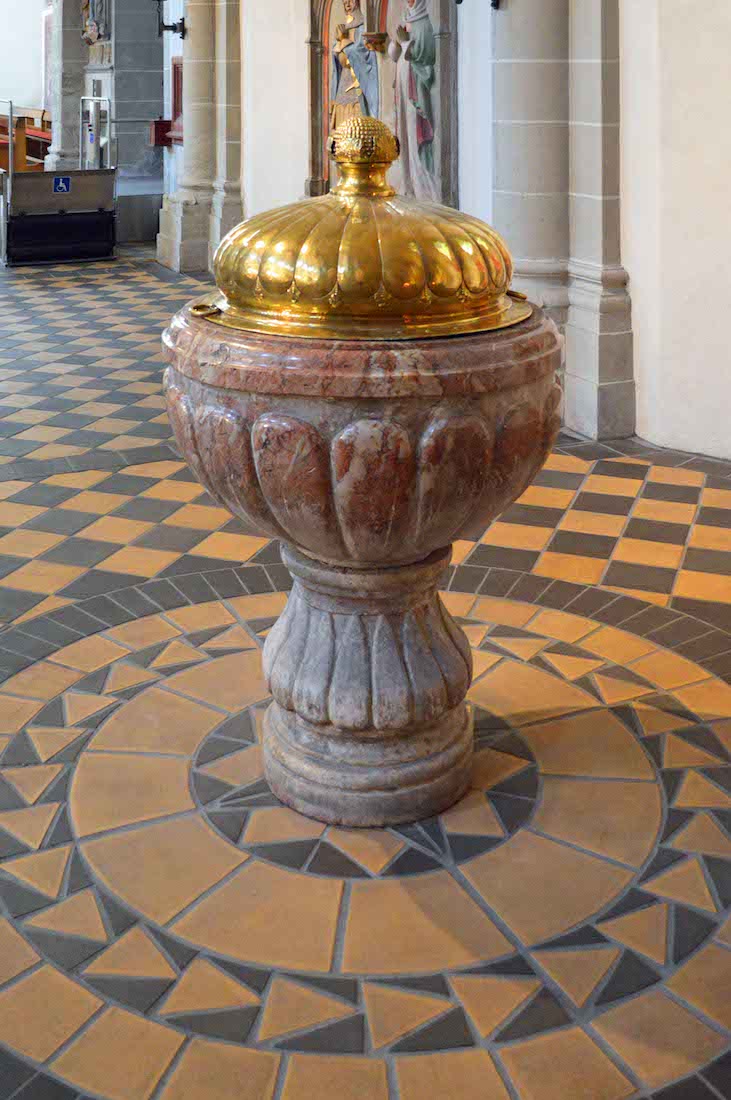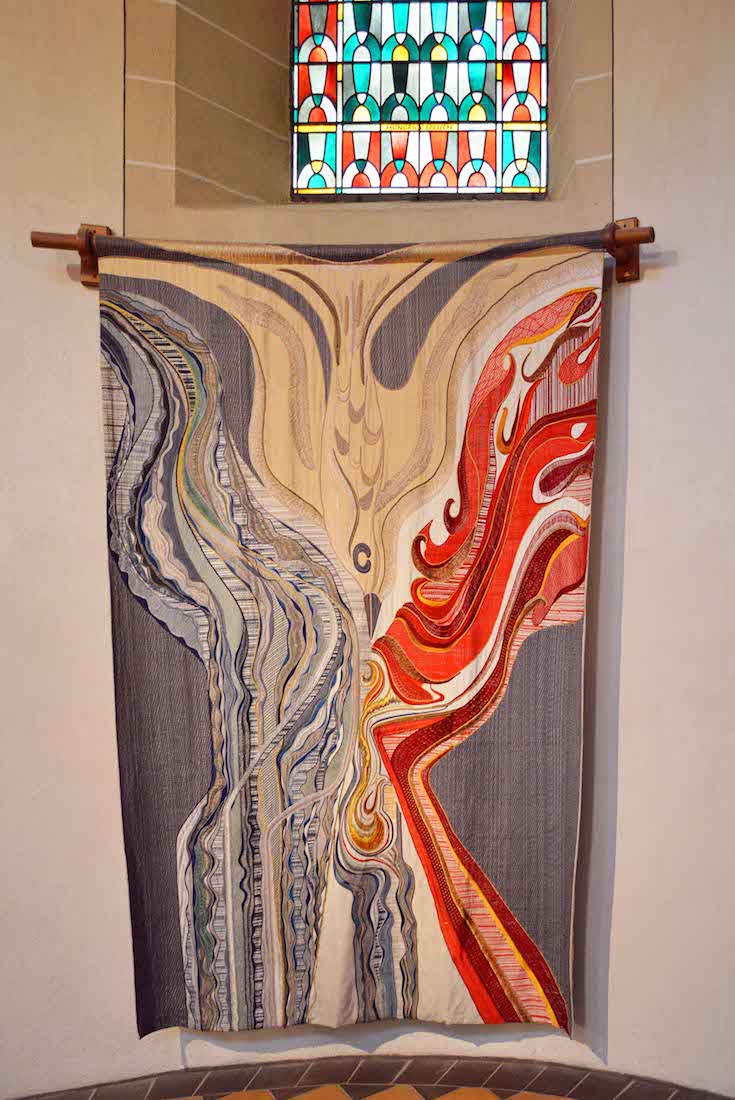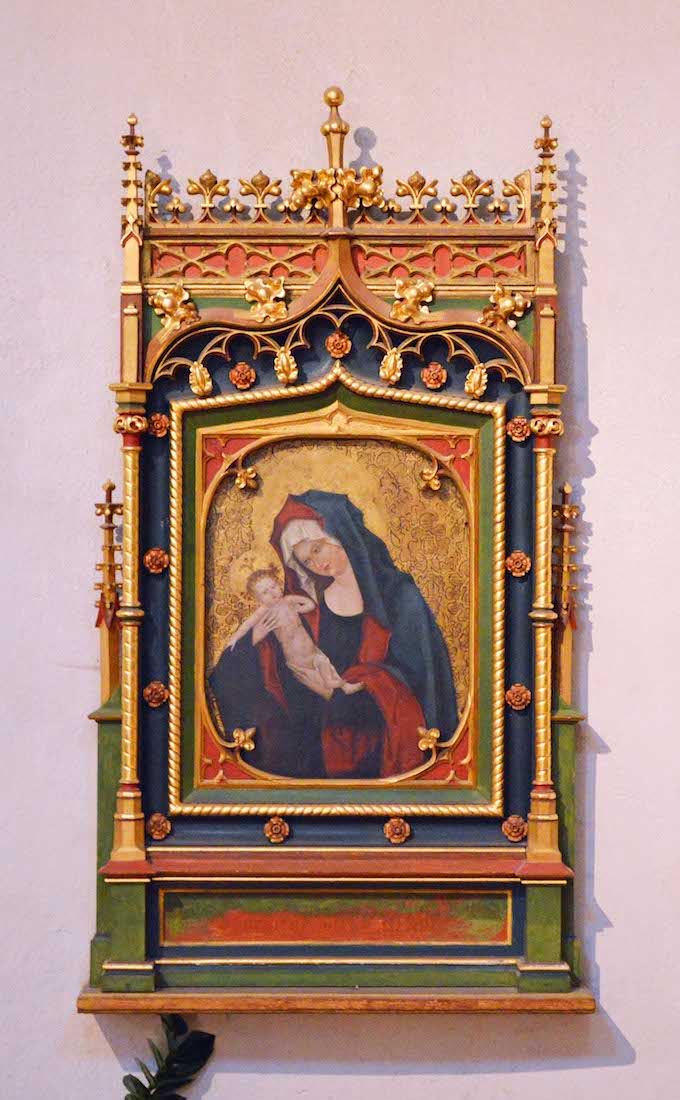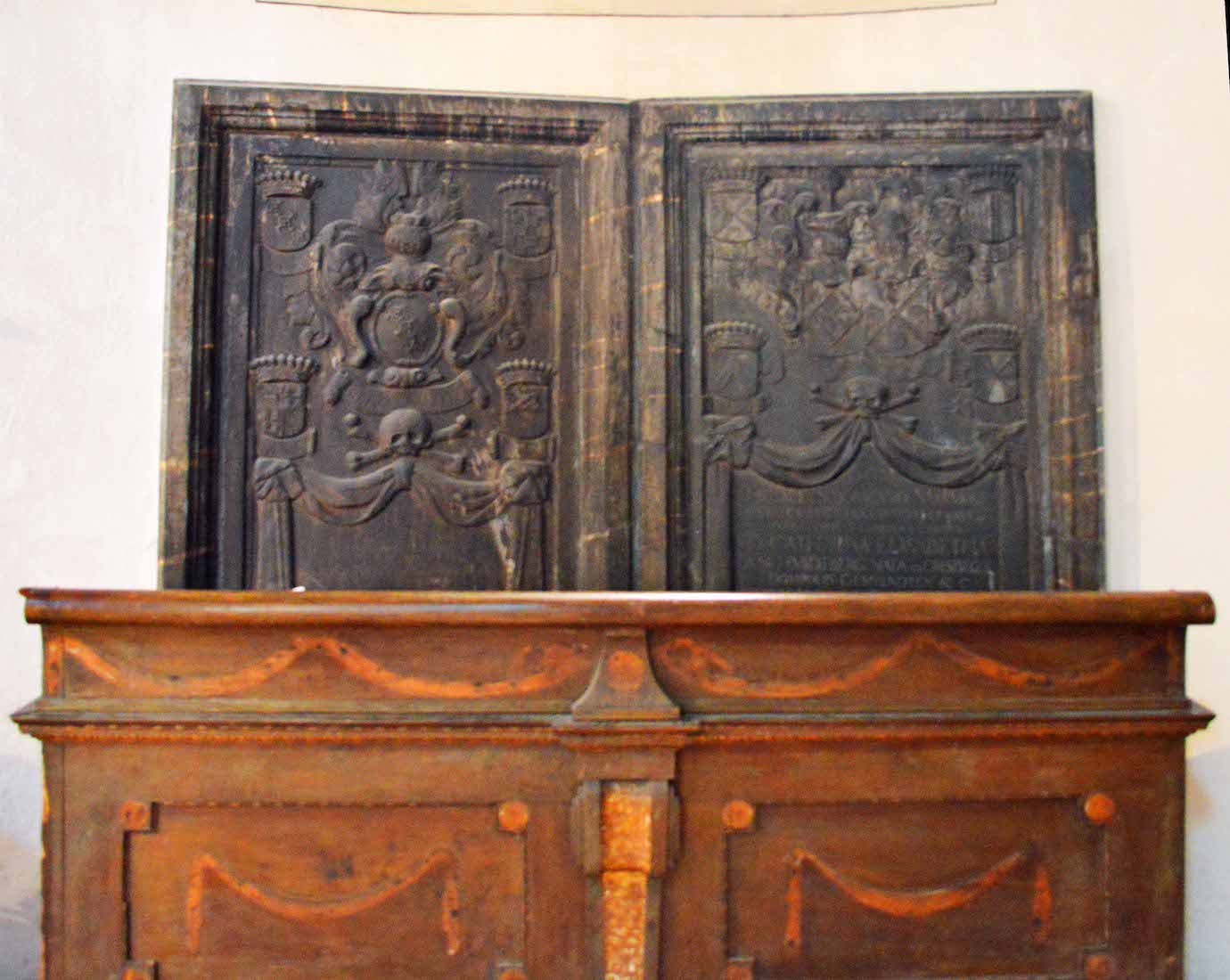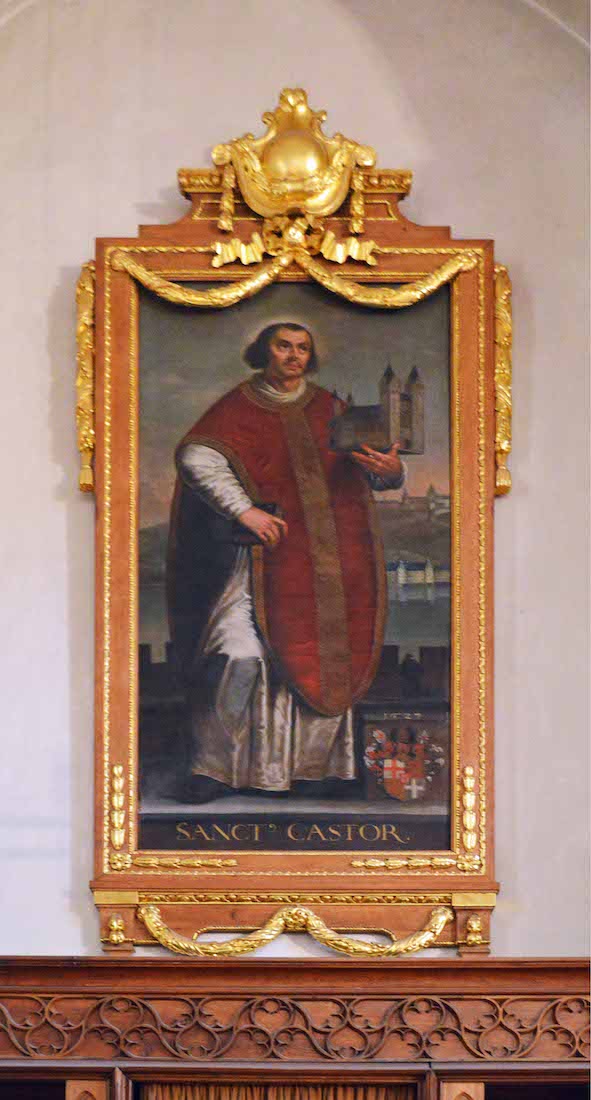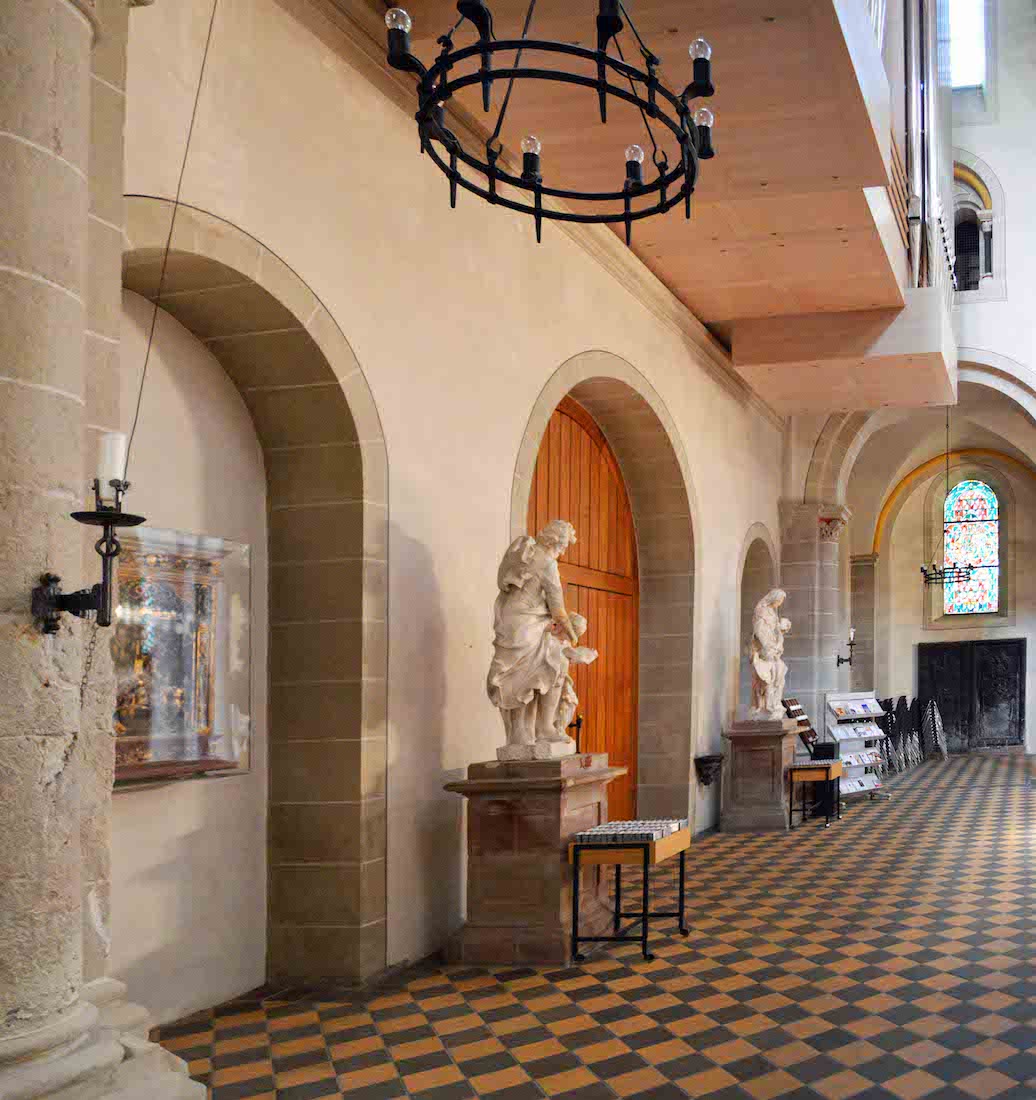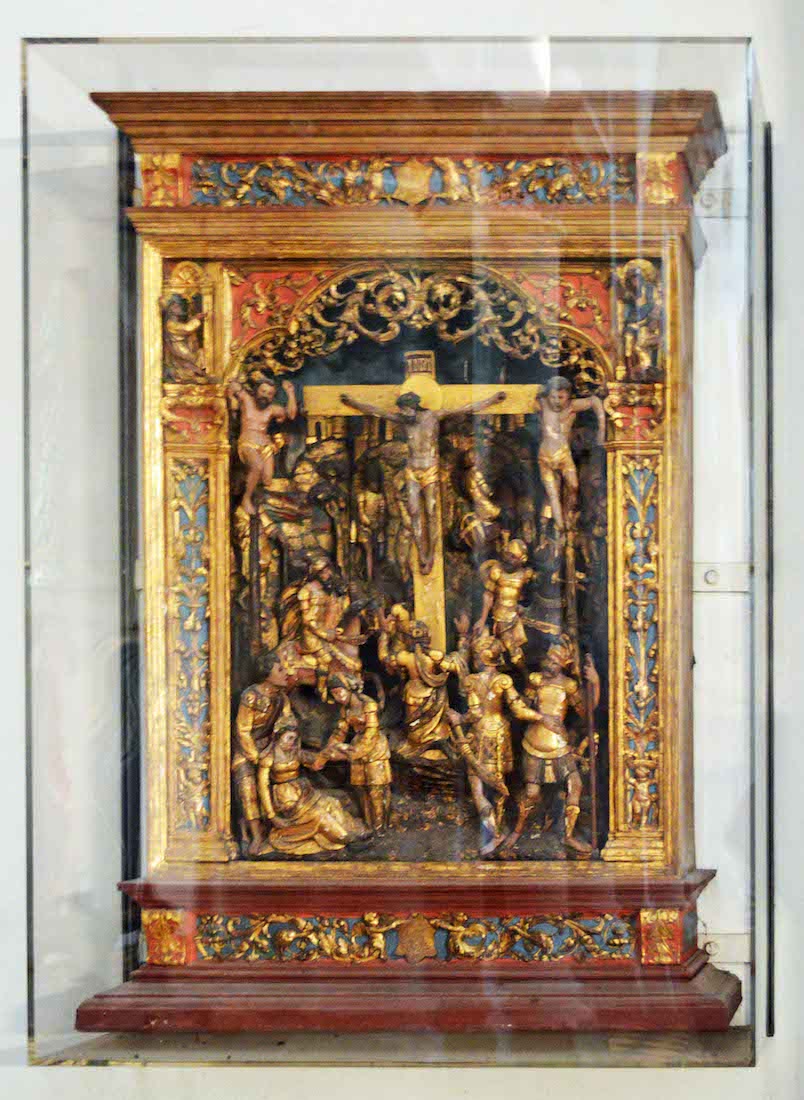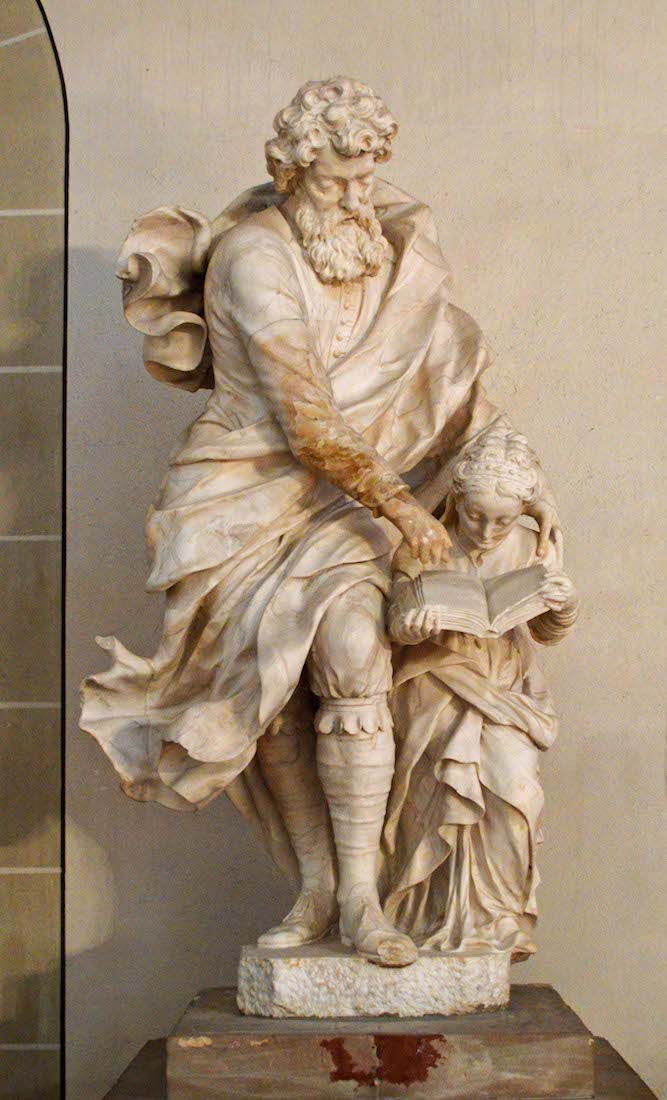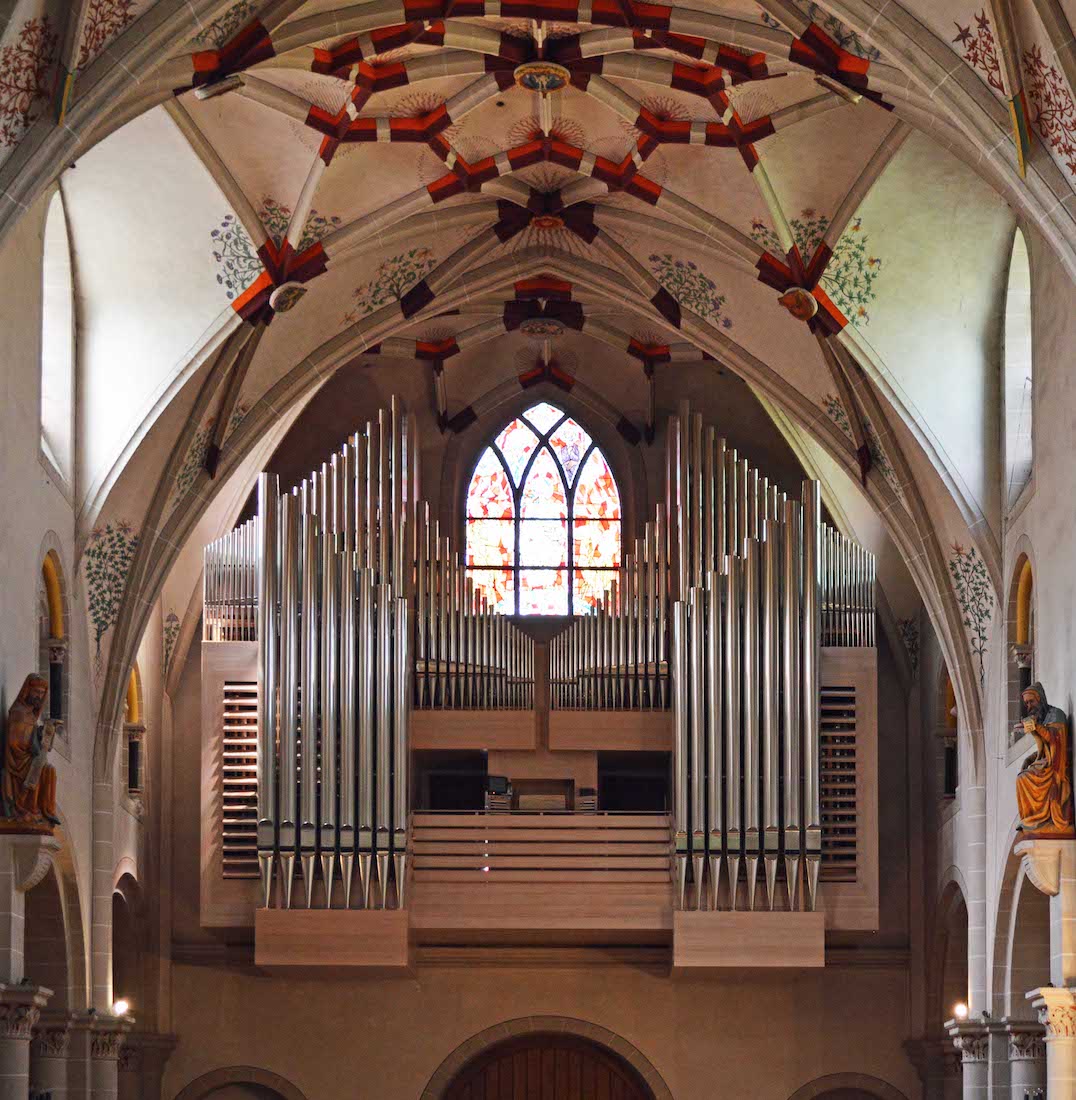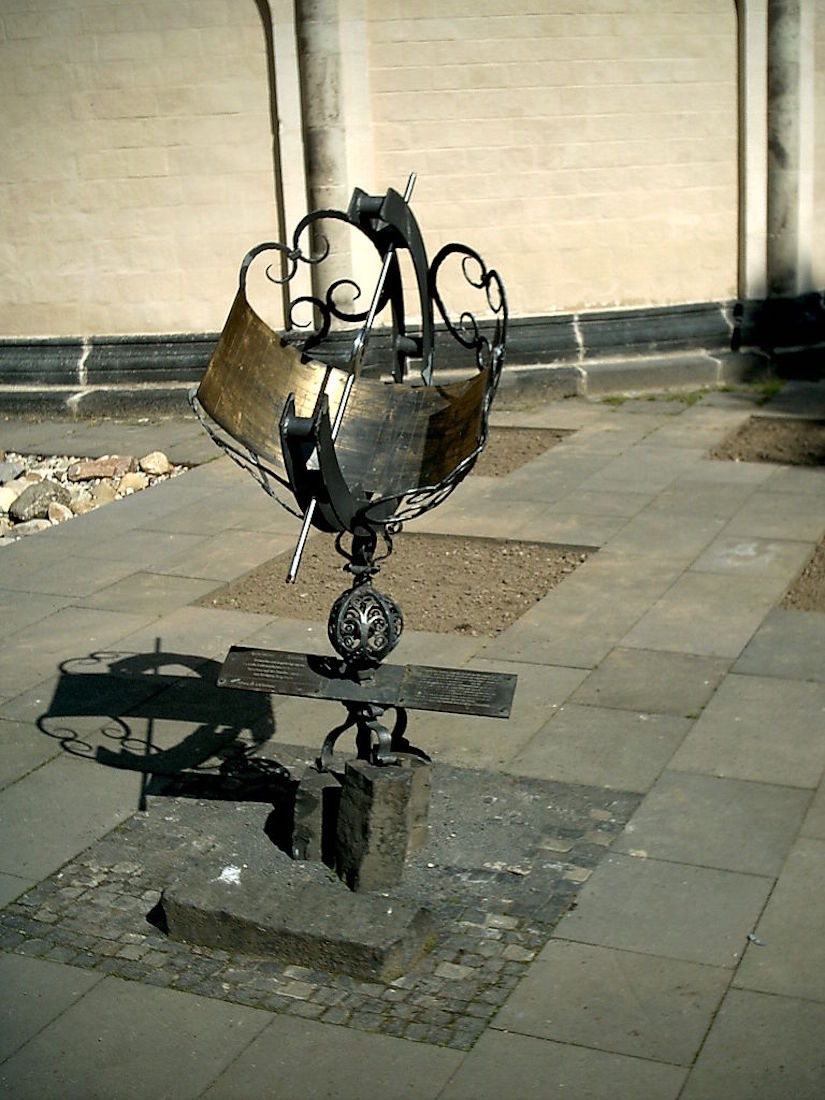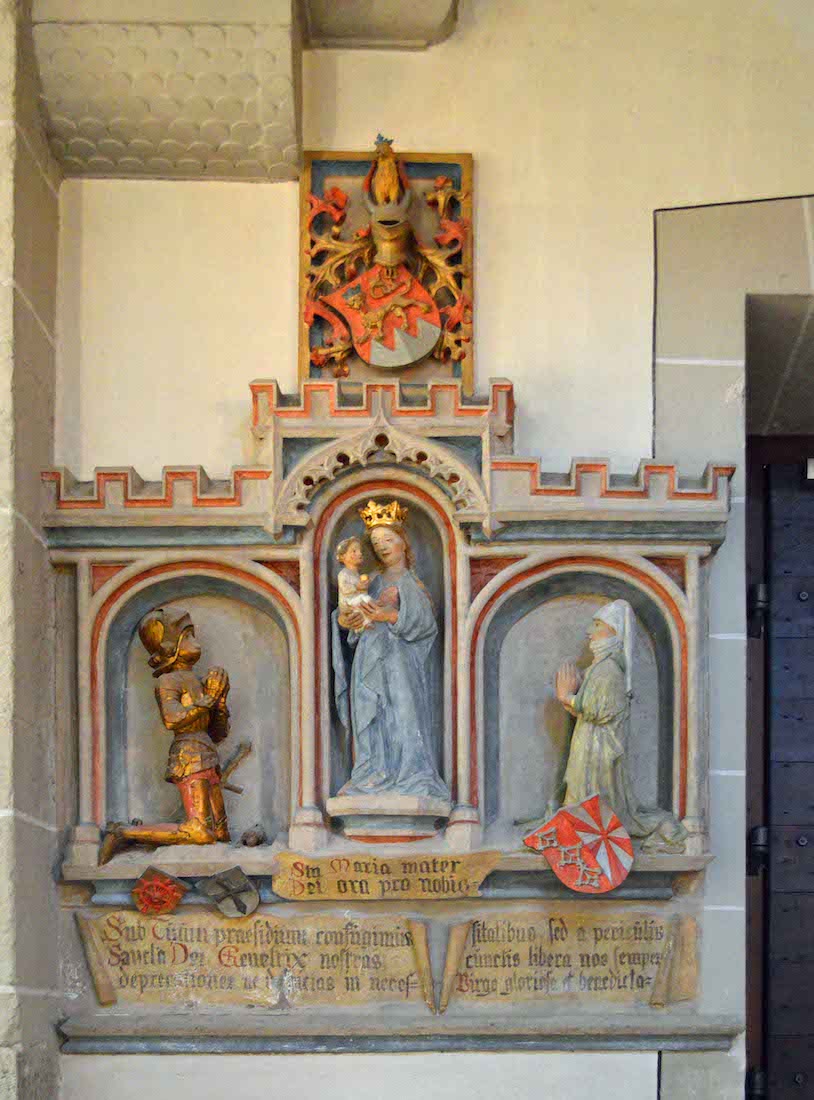
We leave the South transept and make our way up the South aisle of the nave. Right adjacent to the transept is the South door, and close by is this epitaph of Ritter Schönborn und Gattin. It is made of sandstone and dates from 1480. PLAN
62. NAVE SOUTH AISLE
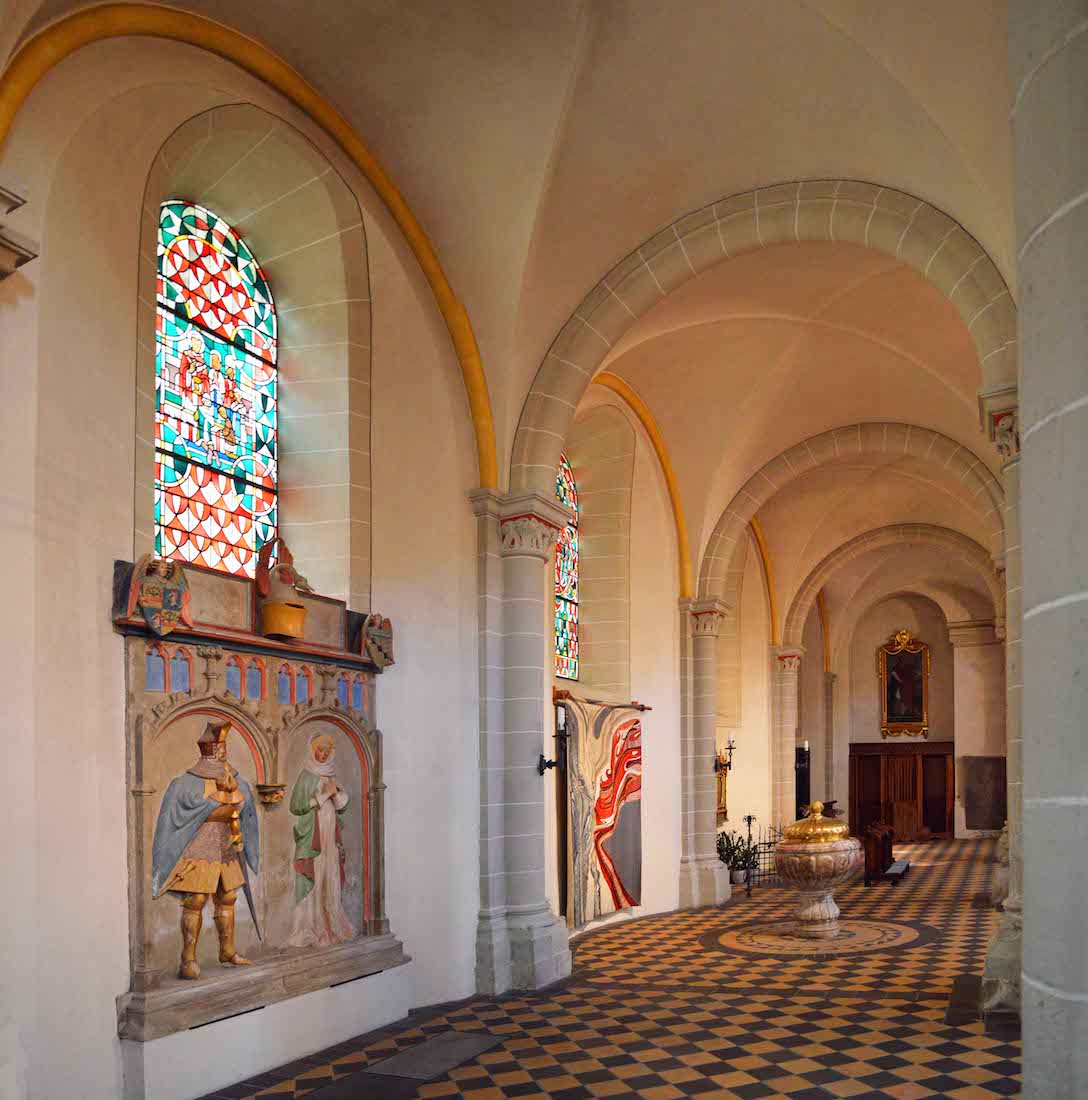
Looking up the South aisle, there are four more stained glass windows, a tomb at left, a tapestry, and other items against the wall in the distance, the wonderful baptismal font, and a painting on the far West wall.
63. SOUTH NAVE WINDOWS
These windows follow the pattern we have observed so far with a central scene. From left we see: • the Eucharist being administered to a family; • The feeding of the 5000; • Jesus meeting the woman at the well; • The parable of the good Samaritan. Each of these windows has a short German explanation.
64. DOUBLE TOMB
The double tomb is of Friedrich von Sachsenhausen, a sovereign of Koblenz who died in 1411, and of his wife, Sophie Schenk von Liebenstein, from the early 1400s. They are depicted almost life-size in sandstone and in period clothing, framed by gothic architecture. This tomb is one of the finest examples of the ‘Soft Style’ of the Rhine region.
66. TAPESTRY
Behind the baptismal font is this intriguing modern tapestry symbolizing the Holy Spirit. When Jesus was baptised by John, the Spirit of God was seen descending on him like a dove.
67. MADONNA
Beyond the tapestry on the South wall is this Madonna from the 15th century within a new gothic frame. The iron screen in front of it was wrought by Sebastian Hoppen of Leubsdorf in 1992.
68. TOMBSTONES
These two tombstones below the next window date from the 18th century.
69. PAINTING
At this stage in our exploration of the Basilica we have arrived at the South West corner. On the West wall is this painting of St Castor, holding a model of the Basilica. St Castor died around 400 AD. By the year 791 AD, there was already a reliquary dedicated to him which was taken to the Paulinuskirchen at Karden. In 836, the relics were moved to what became the Basilica of St. Castor at Koblenz by Archbishop Hetto of Trier.
70. THE WEST NAVE
Our tour of the Basilica is nearly complete. We look back across the West nave to the entry door with a statue on either side. Above us is the main organ of the Basilica.
71. CRUCIFIXION EPITAPH
To our immediate left, behind glass, is a Crucifixion Epitaph comprising multiple figures which date from the end of the 16th century.
72. JOACHIM STATUE
Beside the main entry are two late baroque figures in white marble dating from the mid 18th century. They are said to have previously stood in the Castle of Koblenz, and depict Joachim (with Mary) shown here, and Anne, the parents of the Blessed Virgin.
73. ORGAN
The Basilica had an old organ dating from 1728. A new main organ was built in the North transept in 1962. This was removed in 2013 and a new main organ was installed in 2014 on the West wall above the church entry.
74. ADDENDUM ... SUNDIAL
I found this [Wikipedia] photo of an ancient sundial by the Basilica, which I unfortunately missed. From the background, I place this right close to the Eastern apse. This completes our tour of the Basilica.
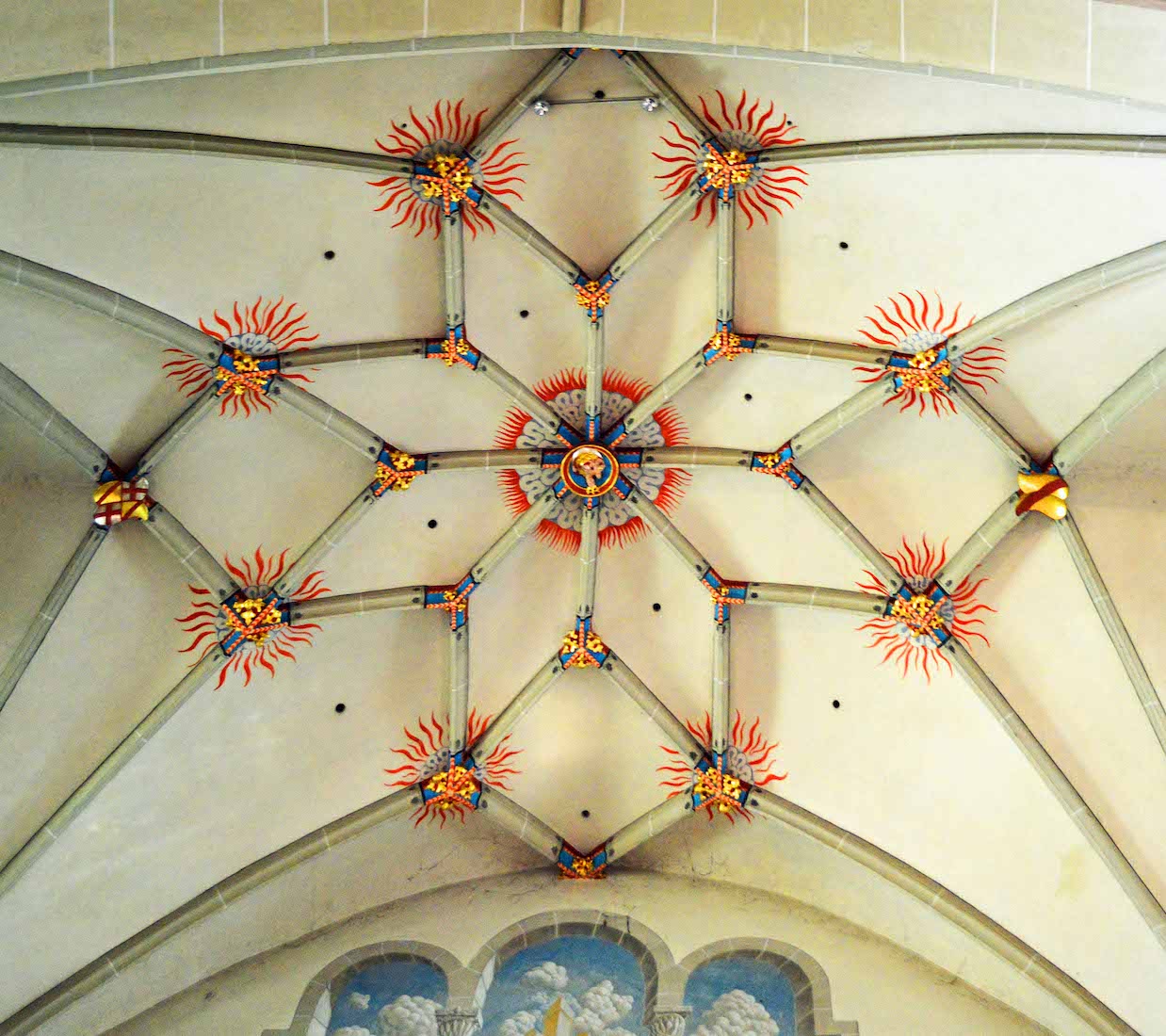
CONCLUSION
I hope you have enjoyed visiting the Basilica of St Castor with me. I found it a very interesting visit, and have learned a number of new things along the way. European churches and cathedrals are different from their British counterparts!
I am happy to receive constructive comments or corrections concerning this website. The best websites are the ones which have no errors! I am grateful to my wife Margie who came to Koblenz with me, and who has proof-read these pages.
As usual, much of the text input on these pages is not original, and I acknowledge with thanks the following sources. I have drawn heavily on the little pamphlet ‘Guide through the Basilica of St Kastor in Koblenz’ put out by the Basilica, and also the Wikipedia website
https://en.wikipedia.org/wiki/Basilica_of_St._Castor
My photographs which appear on this site can also be found in higher resolution at:
https://www.flickr.com/photos/paulscottinfo/albums/
Site created 11 / 2015 ; reformatted 01 / 2021
Paul Scott

